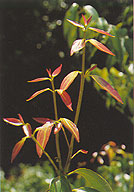
Cinnamon and Ceylon

Text by Florence Ratwatte (May 1991)
Photography by Gamini Jayasinghe
 WHILE SRI LANKA'S MOST famous export today might be tea, historically the most important has been cinnamon. In fact, so strong is the affinity between cinnamon and Sri Lanka that the very botanical name of the spice - Cinnamomum zeylanicum is derived from the island's former name, Ceylon. Throughout the long history of the island, particularly from the 16th through the 18th centuries, cinnamon was the Holy Grail of foreign invaders, becoming the main article of trade for the great Dutch East India Company and over which long and costly wars were fought between Portugal and Holland. Today Sri Lanka is still the world's leading source of cinnamon, producing not only four-fifths of the world output but its choicest grades as well.
WHILE SRI LANKA'S MOST famous export today might be tea, historically the most important has been cinnamon. In fact, so strong is the affinity between cinnamon and Sri Lanka that the very botanical name of the spice - Cinnamomum zeylanicum is derived from the island's former name, Ceylon. Throughout the long history of the island, particularly from the 16th through the 18th centuries, cinnamon was the Holy Grail of foreign invaders, becoming the main article of trade for the great Dutch East India Company and over which long and costly wars were fought between Portugal and Holland. Today Sri Lanka is still the world's leading source of cinnamon, producing not only four-fifths of the world output but its choicest grades as well.
The spice is derived from the sweetly scented inner bark of the cinnamon tree, whose habitats are verdant tropical locations such as Indonesia, the Malabar coast of India, the Seychelles, the West Indies and, more recently, tropical South America. Its use as a spice is of great antiquity and was known in ancient Egypt and is mentioned in the Old Testament.
In the early days in Sri Lanka, cinnamon was collected from wild, natural groves owned by the ruling princes. After the coastal provinces were conquered by the Dutch East India Company, small commercial groves were planted in 1770. Today Sri Lanka grows more than 8,000 of the world's output of 10,000 metric tons on a total of 16,000 hectares, mostly small holdings of four to five hectares. Continued...
